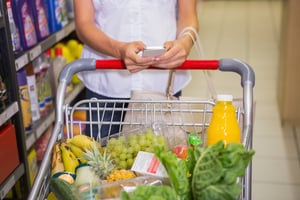 The food market is challenging for packaging suppliers due to the immense number of unique applications where packaging must not only meet detailed performance standards but also be cost-effective and align with specific sustainability targets.
The food market is challenging for packaging suppliers due to the immense number of unique applications where packaging must not only meet detailed performance standards but also be cost-effective and align with specific sustainability targets.
In addition, demand for food packaging is heavily influenced by consumer preferences, which are in turn driven by issues surrounding convenience, sustainability, cost, and shelf appeal. Different types of food packaging fall in and out of favor, and new types of packaging materials are also being developed that could shake up the status quo.
The Freedonia Group closely tracks the food packaging market and has released a series of reports that describe how key market segments are expected to perform over the next few years. Included below are a few interesting highlights.
1. Bowl Food Packaging Market to See Above Average Growth
The Freedonia Group noted that bowls have been a trend in the restaurant world for years. The bowl trend later gained momentum in the processed food industry, causing an ongoing spike in the demand for food packaging bowls. Demand for food packaging bowls is expected to rise 7.3% annually through 2025, driven by novelty and convenience.
Product development in the food packaging bowl market is mainly focused on boosting sustainability by shifting away from plastics. Take, for example, ConAgra’s Healthy Choice brand of frozen meal bowls, which switched from plastic to proprietary fiber-based bowls that are compostable and recyclable.
2. Clamshell Food Packaging Boosted by Popularity of "Grab and Go" Foods
The desire for convenience has also driven the demand for prepared fresh foods in the grocery store. Because clamshells are transparent and crush resistant, they are an ideal container for “grab and go” foods such as entrees, salads, and sandwiches. Clamshells are also a common type of packaging for fragile items like berries and cookies.
The demand for clamshell food packaging is expected to grow 3.6% per year to $1.6 billion in 2025. Plastic is expected to decline in use due to sustainability concerns. In the future, producers of plastic clamshells are likely to incorporate more recycled content into packaging and work toward developing clamshells using bioplastics.
3. Pandemic-Driven Surge in Home Cooking Enlivens Spice Packaging Market
Historically, packaging demand for spices, dry mixes, and extracts has experienced relatively steady incremental growth, but demand for these products surged in 2020 as the pandemic led more consumers to cook and bake at home. From a high base in 2020, the demand for packaging used with spices, dry mixes, and extracts is forecast to grow 2.4% per year to 1.1 billion in 2025.
Sustainability is also a key trend in this market segment. McCormick and Morton have started moving away from metal canisters (such as the iconic Old Bay metal cans) toward plastic bottles to reduce their carbon footprint. McCormick has also pledged to achieve 100% circular plastics packaging in consumer products by 2025.
Additional Food Packaging Market Research
If you need additional market research, be sure to check out recent food packaging market research reports published by The Freedonia Group, a leading market research firm and division of MarketResearch.com.
You can find high-level consumer insights and drill down to access market data on specific segments, from egg packaging and produce packaging to baby food & formula packaging and much more.
About the author: Sarah Schmidt is a Managing Editor at MarketResearch.com, a leading provider of global market intelligence products and services.


